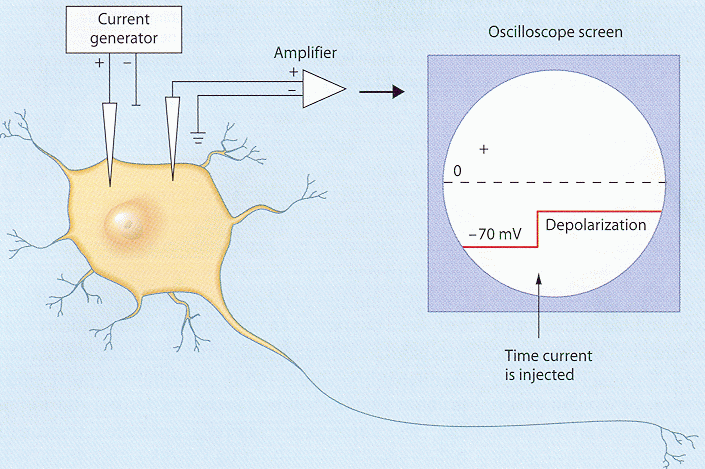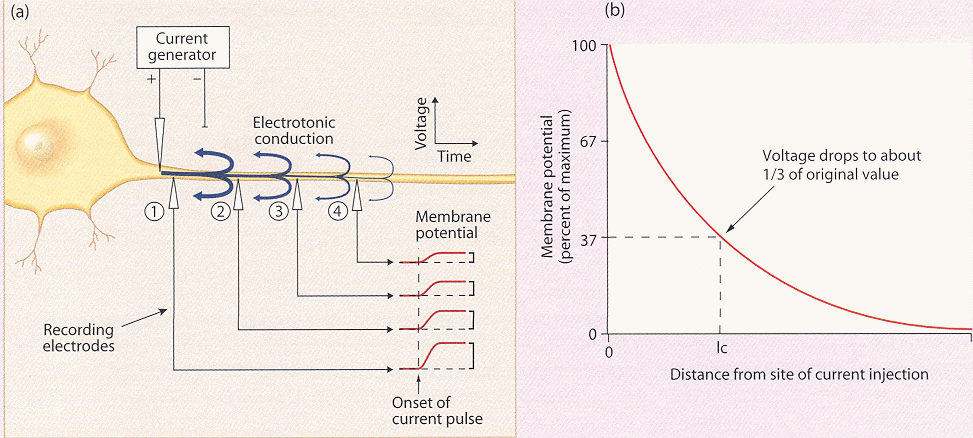
Some other transmembrane ion channels are affected by external influences such as voltage, chemicals (e.g., neurotransmitters), or physical stimulation (e.g., pressure in touch receptors in the skin, or light in photoreceptor in the eye). Voltage-gated channels are closed at the resting membrane potential but open as the membrane is depolarized, i.e., intracellular voltage is raised from negative 70 mV to some value closer to zero. These gated ion channels play an essential role in generating action potentials for transmitting neuronal signals through long distances.

When a sensory receptor (such as the photoreceptors in the retina) or synapse
is activated by chemical or physical stimuli, ion channels in a localized
region open to let ionic current (Na+, K+, Cl-) flow across the
membrane. These inward electrical currents raise the intracellular potential
and the membrane potential is reduced or depolarized. These currents gradually
leak back out of the neuron due to the transmembrane channels to form complete
circuits. The membrane depolarization declines with the distance from the site
of the receptor or the synapse
As passive current does not travel far inside the neuron, it is not sufficient for neuronal signal transmission, especially along the long axons to convey the information to the next neuron.
